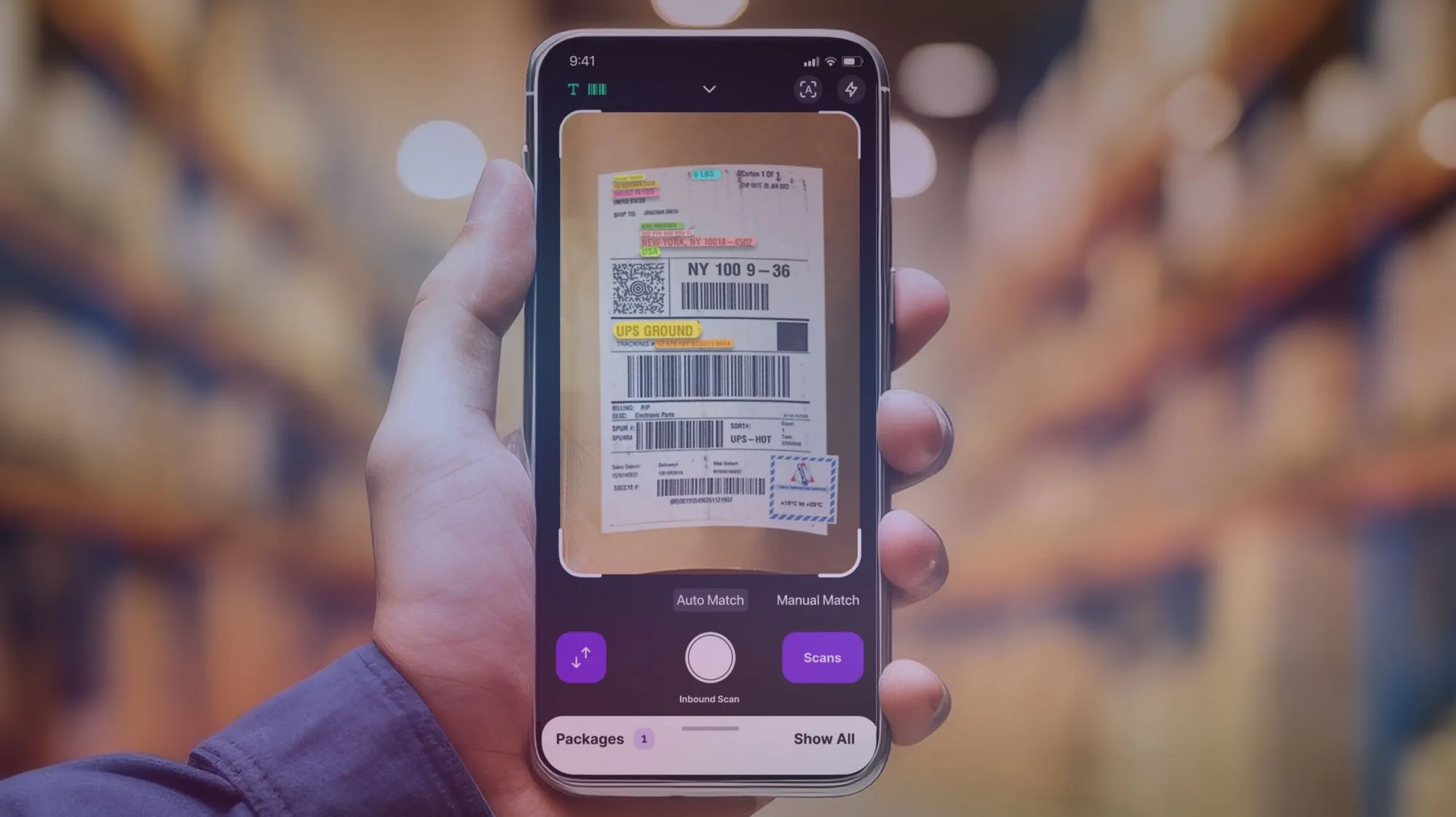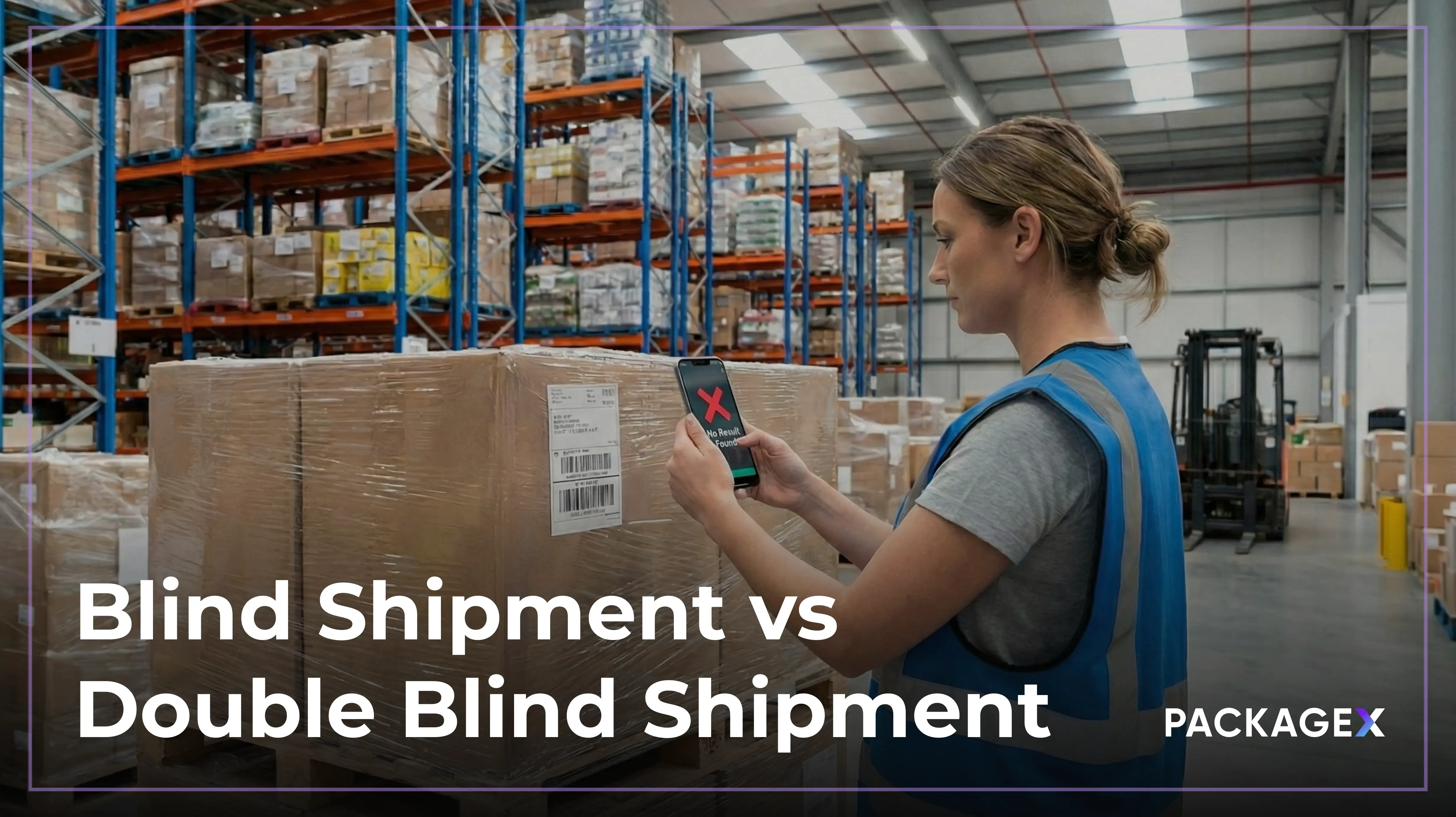As industries worldwide race to adopt the latest technological advancements, AI-powered Optical Character Recognition (OCR) is emerging as a game-changer. By automating document and data processing, OCR has already streamlined operations in sectors like logistics, healthcare, and finance. However, with AI advancements, OCR is now entering a new era—one that is redefining its capabilities and impact on business efficiency.
But first, what is OCR? OCR is a technology that reads and converts different types of documents into editable and searchable formats. With AI, it’s more powerful than ever, enabling businesses to unlock insights and optimize workflows in ways traditional OCR never could.
In this article, we'll explore the evolution of AI-powered OCR, its current and future applications across various industries, and how it is reshaping global operations by driving efficiency, accuracy, and innovation.
What is OCR?
Optical Character Recognition (OCR) is a technology that converts different types of documents, such as scanned paper documents, PDF files, or images captured by a digital camera, into editable and searchable data. At its core, OCR works by analyzing patterns of light and dark in images to identify individual characters. Once these characters are recognized, they can be converted into digital text, making the content searchable, editable, and more accessible to store.
OCR is widely used in document scanning and data entry tasks where converting paper records into digital formats is essential. For example, businesses use OCR to digitize contracts, invoices, receipts, and other paper documents, saving time on manual data entry. In industries like logistics and finance, OCR can be applied to extract information from forms and automate workflows.
While traditional OCR is useful for basic text recognition, it struggles with accuracy when faced with complex layouts, poor image quality, or handwritten text. This is where AI-powered OCR comes in. By integrating machine learning and artificial intelligence, modern OCR systems can recognize text and context, adapt to various fonts and languages, and improve accuracy over time. AI-powered OCR can handle more complex data extraction tasks, such as processing unstructured documents, making it a far more versatile tool than its traditional counterpart.
The Role of AI in Advancing OCR Technology
Traditional OCR was limited to basic document scanning and text recognition. However, with the integration of artificial intelligence, OCR has transformed into a more intelligent and efficient tool. AI-powered OCR uses machine learning and natural language processing to understand the characters on a page and the context in which they appear. This advancement allows OCR to handle more complex data, recognize various fonts and languages, and even process handwritten text.
AI enables the technology to learn from its errors, continuously improving its accuracy with each use. For businesses, this means faster, more reliable data extraction, even from unstructured sources like contracts or invoices. The application of AI also extends OCR's capabilities to perform tasks like categorizing documents and extracting relevant information, making it a vital tool for organizations seeking to automate and optimize their document-heavy processes.
An example of how OCR can work for a business is extracting text from a bill of lading. These are the four components of how that would work:
1. Text Capture
In this phase, scanners or cameras scan the physical document or image that requires processing.
2. Text Recognition
Specialized algorithms analyze the scanned image during this phase to identify individual characters and symbols. The software maps these visual elements to their corresponding machine-encoded text characters.
3. Data Extraction
Customized rules and patterns guide the OCR software in pulling out specific information relevant to logistics operations during extraction.
For example, the system might extract shipping details like tracking numbers, consignee addresses, and item descriptions from a bill of lading. Similarly, it could pull line-item specifics, such as product codes and prices, from an invoice.
In the example below, OCR technology from PackageX is used to extract data from a bill of lading.
4. Data integration
The final step involves seamlessly integrating the extracted data into a logistics management system. In this phase, automated workflows use the OCR-extracted data to perform various tasks, such as updating inventory levels, generating customer invoices, or providing real-time shipment tracking.
By directly populating the system, OCR minimizes the need for manual data entry, thereby reducing errors and increasing overall operational efficiency.
Industry-Wide Impact of AI-Powered OCR
AI-powered OCR is not just a technological upgrade—it's a catalyst for transformation across a wide range of industries. The ability to automatically extract and process data from physical or digital documents with precision is driving once unimaginable efficiencies. AI-powered OCR has become an indispensable tool in sectors where document handling and data management are crucial, such as logistics, healthcare, and financial services. By reducing manual processes, minimizing errors, and speeding up workflows, this technology saves businesses time and resources and makes smarter, data-driven decisions in real-time.
From automating routine tasks to enabling more complex data analysis, AI-powered OCR is reshaping how industries operate. Some key sectors that open up new opportunities for growth and innovation are:
- Logistics & Supply Chain: The logistics industry, in particular, benefits from AI-powered OCR by automating everything from tracking shipments to managing invoices and handling customs documentation. With faster document processing, businesses can reduce delays and improve overall supply chain efficiency.
- Healthcare: In healthcare, AI-powered OCR is streamlining patient record management, automating billing, and improving the accuracy of insurance claims processing. This reduces administrative workloads and ensures greater accuracy in sensitive health data management.
- Financial Services: AI-powered OCR is transforming financial services by automating data extraction from documents like receipts, invoices, and bank statements. This reduces manual entry, eliminates errors, and speeds up compliance reporting, allowing financial institutions to operate more efficiently.
- Retail & E-Commerce: Retailers are leveraging AI-powered OCR to optimize inventory management by automating the processing of invoices, receipts, and supply chain documents. This increases operational efficiency and enhances customer service by ensuring faster order processing and accurate inventory tracking.
The Future of AI-Powered OCR
As AI-powered OCR evolves, we can expect even more seamless data extraction and real-time processing capabilities. One key prediction is that OCR will become faster and more intuitive, capable of processing complex documents with minimal human intervention. Advances in machine learning algorithms will enable OCR systems to learn from vast amounts of data, improving accuracy with every interaction.
Another exciting development is the integration of AI-powered OCR with other emerging technologies like computer vision and the Internet of Things (IoT). Computer vision allows OCR systems beyond simple text recognition by interpreting visual data within images, such as logos, barcodes, and visual context. Meanwhile, IoT connectivity could allow for real-time data processing directly from connected devices, such as cameras or warehouse scanners, enhancing operational efficiency.
As industries continue to push toward automation, the demand for AI-powered OCR will grow exponentially. From supply chains to healthcare systems, businesses increasingly turn to intelligent automation to handle large volumes of unstructured data, eliminate manual errors, and streamline workflows. The future of OCR lies in its ability to integrate seamlessly with AI-driven systems, offering smarter, faster, and more adaptable solutions that meet the evolving needs of global industries.
Challenges and Considerations
While AI-powered OCR holds immense promise, there are several challenges businesses must consider to unlock its potential fully.
Data Privacy and Security
One of the most pressing issues is data privacy. AI-powered OCR systems handle vast amounts of sensitive data, including financial records, personal information, and legal documents. The risk of unauthorized access or data breaches is a significant concern, especially in healthcare, finance, and legal services industries. Organizations must implement robust security measures such as encryption, access controls, and secure data storage to mitigate these risks. Compliance with data protection regulations, like the EU's GDPR or HIPAA in the United States, is critical to avoid legal consequences and to maintain customer trust.
Regulatory Compliance
Closely linked to privacy concerns is the challenge of regulatory compliance. As data protection laws evolve globally, businesses must ensure that their AI-powered OCR systems comply with local and international regulations. This involves staying up-to-date with legislation, conducting regular audits of data handling practices, and ensuring that any third-party OCR solutions meet compliance standards. Failing to do so could result in hefty fines, reputational damage, and disruptions in business operations.
Accuracy and Reliability in Complex Scenarios
While AI-powered OCR significantly improves accuracy over traditional OCR, it is not infallible. Handling complex or highly unstructured data—such as poorly scanned documents, heavily formatted layouts, or handwriting—can pose challenges. In industries where precision is critical, such as legal or medical fields, even minor data extraction errors could have significant consequences. Businesses must ensure that their OCR systems are regularly trained with relevant datasets and updated to handle more complex data structures. They may need to build in human oversight for quality assurance in critical use cases.
Initial Implementation Costs and Integration
Integrating AI-powered OCR into existing business workflows can also present cost and complexity challenges. For companies with legacy systems or highly specialized workflows, there may be substantial upfront costs related to software licensing, hardware upgrades, and training employees on the new technology. Additionally, organizations may need to reconfigure their entire data infrastructure to ensure seamless integration of OCR systems with their enterprise resource planning (ERP), customer relationship management (CRM), or other software solutions. Proper budgeting for implementation and factoring in change management is crucial for minimizing disruption and ensuring ROI.
Workforce Adaptation and Skill Development
As businesses increasingly rely on AI-powered OCR for document processing and data extraction, there is a growing need for the workforce to adapt to new technology. Employees must be trained to use these systems, troubleshoot them, and collaborate with IT teams to integrate OCR into larger automation workflows. Moreover, as OCR technology evolves, continuous learning and skill development will be essential to ensure that teams can maximize the benefits of this tool. Fostering a digital literacy and innovation culture is crucial for companies to stay competitive in an increasingly automated world.
Keeping Pace with Technological Advancements
The rapid pace of innovation in AI and OCR technology presents another challenge. As AI-powered OCR solutions evolve with new features, such as improved handwriting recognition, real-time processing, or integration with other AI tools like natural language processing (NLP) or computer vision, businesses must stay ahead of these developments to remain competitive. This requires not only monitoring advancements but also regularly updating or even replacing systems to ensure optimal performance. Businesses that fail to invest in continual improvements risk falling behind, while competitors who adopt cutting-edge solutions will gain a significant operational edge.
Conclusion
The future of AI-powered OCR is poised to revolutionize global industries by enhancing efficiency, accuracy, and innovation. As businesses continue to embrace automation, the need for faster, more intelligent data processing systems has never been greater. AI-powered OCR not only solves the challenges of traditional OCR by handling complex documents and unstructured data but also opens doors to new opportunities by integrating with emerging technologies like computer vision and IoT.
From logistics to healthcare and financial services, AI-powered OCR streamlines processes reduces human error and enables real-time data-driven decision-making. However, with its rapid evolution come challenges that businesses must address—data privacy, regulatory compliance, and the need for constant adaptation to technological advancements.
For organizations looking to remain competitive in an increasingly automated world, adopting AI-powered OCR is no longer just an option; it's necessary. By staying ahead of the curve and investing in this powerful technology, businesses can unlock new levels of efficiency and innovation that will drive their success in the future.
As we look ahead, one thing is clear: AI-powered OCR will continue to shape industries, transforming how businesses operate and paving the way for smarter, more agile operations on a global scale.
{{returns-webinar}}
FAQs
1. What is OCR?
OCR (Optical Character Recognition) is a technology that converts documents, such as scanned paper or PDFs, into editable and searchable data by recognizing text within images.
2. How does AI improve OCR?
AI enhances OCR by increasing accuracy, enabling better recognition of complex fonts and languages, and allowing the software to learn and adapt over time. AI-powered OCR can also extract data from more intricate layouts, making it more versatile than traditional OCR.
3. What industries benefit most from AI-powered OCR?
AI-powered OCR benefits industries such as logistics, healthcare, finance, and retail significantly. It helps automate data extraction from documents, streamline workflows, and reduce human errors.
4. Can AI-powered OCR recognize handwriting?
Yes, with advancements in AI, modern OCR solutions can recognize and process handwritten text, though accuracy may depend on the clarity of the handwriting.
5. How secure is AI-powered OCR for sensitive data?
AI-powered OCR systems increasingly incorporate security features such as encryption and compliance with regulations like GDPR and HIPAA, ensuring the safe handling of sensitive data.
6. What is the future of AI-powered OCR?
AI-powered OCR is expected to become even more accurate and capable, integrating with other technologies like IoT and computer vision to enable real-time data processing and enhanced automation.
7. How can AI-powered OCR benefit my business?
By automating document processing tasks, AI-powered OCR can save time, reduce manual errors, and improve operational efficiency across various departments, from finance to logistics.





